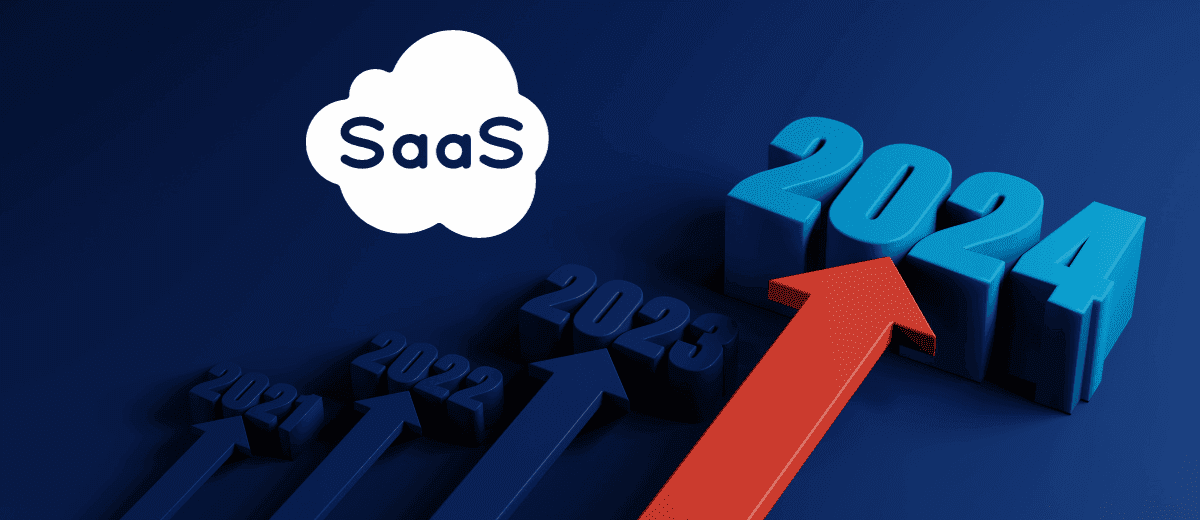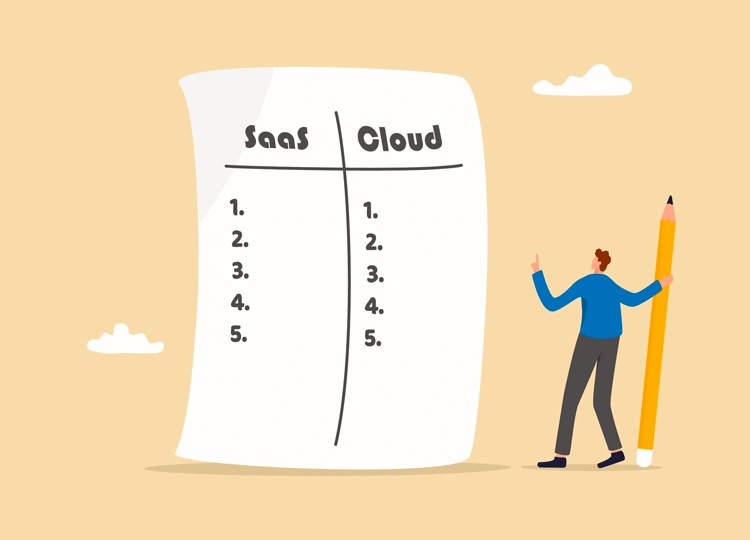The future of SaaS in cloud computing looks promising. SaaS, or Software as a Service, is growing rapidly.
Businesses are increasingly adopting SaaS for its flexibility and cost-effectiveness. Cloud computing has changed how companies operate. SaaS is a big part of this change. With SaaS, businesses can use software over the internet without needing to install or maintain it.
This model saves time and resources, making it popular among small and large companies. As technology advances, SaaS offerings will become even more sophisticated and tailored to specific needs. The future of SaaS in cloud computing will likely include more innovation, better security, and increased integration with other technologies. This evolution will help businesses stay competitive and efficient in a fast-paced digital world.
Rise Of Saas In Cloud Computing
The rise of SaaS in cloud computing marks a significant shift. Businesses now prefer cloud solutions over traditional software. SaaS (Software as a Service) offers flexibility, scalability, and cost-effectiveness.
Historical Context
Initially, businesses relied on on-premises software. These solutions required significant investments in hardware and maintenance. In the early 2000s, cloud computing emerged. It promised a new way to deliver software.
SaaS started gaining traction. Companies like Salesforce led the way. They provided software via the internet. This model reduced costs and improved accessibility. Businesses no longer needed to invest in physical infrastructure.
Current Trends
Today, SaaS dominates the cloud computing landscape. Many industries adopt SaaS solutions. These include CRM, HR, and finance. The SaaS market continues to grow rapidly.
AI and machine learning are integrating into SaaS platforms. This enhances functionality and user experience. Customization and automation are key trends. They help businesses streamline operations.
Security remains a top priority. SaaS providers focus on robust security measures. This ensures data protection and regulatory compliance. Multi-tenancy and microservices architecture are also rising.
Mobile accessibility is crucial. SaaS applications are now mobile-friendly. This allows users to work from anywhere. Real-time collaboration tools are also popular. They improve team productivity and communication.

Credit: www.bombaysoftwares.com
Key Innovations Driving Saas
Key innovations drive the SaaS industry forward. These innovations transform how businesses operate and offer services. They enhance efficiency and provide better user experiences. Let’s explore some of these key innovations.
Ai And Machine Learning Integration
AI and machine learning have become integral to SaaS. They automate tasks and provide intelligent insights. AI helps in personalizing user experiences. It can analyze user behavior and suggest improvements. This leads to higher customer satisfaction. Machine learning algorithms predict trends and potential issues. This helps businesses stay ahead of problems. They can make data-driven decisions faster. AI and machine learning enhance the efficiency and effectiveness of SaaS solutions.
Advanced Data Analytics
Data is the new oil in the SaaS industry. Advanced data analytics is crucial for extracting valuable insights. It helps businesses understand user behavior and preferences. This can lead to better product development. Companies can target their marketing efforts more effectively. They can also optimize their operations based on data insights. Real-time data analytics offers immediate feedback. This allows for quick adjustments and improvements. By leveraging advanced data analytics, businesses can stay competitive and grow.
Benefits Of Modern Saas Solutions
The future of SaaS in cloud computing looks bright. Modern SaaS solutions offer numerous benefits that make them highly appealing. These benefits include scalability, flexibility, and cost efficiency. Let’s explore these advantages in detail.
Scalability And Flexibility
Modern SaaS solutions provide excellent scalability. Businesses can easily adjust their usage based on demand. This helps companies grow without major investments in infrastructure. SaaS platforms also offer great flexibility. Users can access services from anywhere with an internet connection. This flexibility supports remote work and global collaboration.
Cost Efficiency
One of the biggest benefits of SaaS is cost efficiency. There is no need for expensive hardware or software installations. Businesses only pay for what they use. This reduces upfront costs significantly. SaaS solutions also lower maintenance costs. Service providers handle updates and security, saving businesses time and money. Overall, SaaS offers an affordable way to access advanced technology.
Challenges In Saas Adoption
Adopting SaaS in cloud computing offers many benefits, such as cost savings and scalability. Yet, challenges make some businesses hesitant. Security concerns and compliance issues are two major hurdles. These issues need careful consideration before moving to a SaaS model.
Security Concerns
Security is a top concern for businesses using SaaS. Data breaches can lead to loss of sensitive information. Many companies worry about how well their data is protected. They need to ensure the SaaS provider has strong security measures. Encryption, regular security audits, and secure access controls are essential. Businesses must trust that their data is safe in the cloud.
Compliance Issues
Compliance with regulations is another challenge. Different industries have specific rules for data handling. For example, healthcare companies must follow HIPAA regulations. Financial firms need to comply with GDPR. Ensuring the SaaS provider meets these standards is crucial. Non-compliance can result in hefty fines and legal problems. Businesses must verify that SaaS vendors follow all necessary regulations.
Future Trends In Saas
The future of SaaS in cloud computing is bright and ever-evolving. As technology advances, new trends emerge. These trends shape the way businesses use and benefit from SaaS. Let’s explore some key future trends in SaaS that will impact cloud computing.
Edge Computing
Edge computing brings computation and data storage closer to the data source. It reduces latency and improves performance. SaaS applications can benefit from faster data processing. This trend is crucial for industries needing real-time data analysis. For example, healthcare and finance sectors. Edge computing enhances user experience and operational efficiency.
Serverless Architectures
Serverless architectures allow developers to focus on code. They don’t need to manage servers. This leads to faster development and deployment of applications. SaaS providers benefit from reduced operational costs. Serverless models offer scalability and flexibility. They adapt to varying workloads easily. Businesses can innovate faster with serverless architectures.
Impact Of Saas On Businesses
Software as a Service (SaaS) has transformed the way businesses operate. It offers flexibility and scalability, essential for staying competitive in today’s market. Let’s explore the specific impacts of SaaS on businesses.
Operational Efficiency
SaaS tools streamline processes, reducing the need for manual tasks. This increases productivity and allows teams to focus on strategic initiatives. Automating routine activities also minimizes errors. Real-time data access enhances decision-making, providing a competitive edge.
Customer Experience
SaaS solutions improve customer interactions by offering personalized services. They track customer behavior, enabling businesses to tailor their offerings. This leads to higher customer satisfaction and loyalty. Easy access to support and services ensures a better overall experience.
Emerging Saas Models
The future of SaaS in cloud computing is evolving rapidly. New models are emerging, offering specialized solutions and improved user experiences. Let’s explore two key emerging SaaS models: Vertical SaaS and Micro-SaaS.
Vertical Saas
Vertical SaaS targets specific industries or niches. It addresses unique needs and challenges faced by those sectors. For example, healthcare, finance, and retail have their own specialized SaaS solutions. These solutions offer tailored features and functionalities.
- Healthcare SaaS: Manages patient records and appointment scheduling.
- Finance SaaS: Facilitates accounting and financial reporting.
- Retail SaaS: Enhances inventory management and customer relationship management.
This specialized approach leads to higher efficiency and better user satisfaction. Companies can focus on their core operations while leveraging SaaS for industry-specific tasks.
Micro-saas
Micro-SaaS refers to small-scale SaaS solutions. These solutions target a small, niche market. They often address a single problem with a simple, effective solution. For instance, a tool that automates repetitive tasks in a specific software could be considered Micro-SaaS.
- Lower development costs: Easier to build and maintain.
- Focused functionality: Solves specific problems efficiently.
- High flexibility: Easy to adapt and update.
Micro-SaaS solutions often have dedicated user bases. This loyalty comes from the value they provide in their niche. These solutions can thrive with minimal competition and a strong user focus.

Credit: www.linkedin.com
Preparing For The Future
The future of SaaS in cloud computing is bright and evolving. Businesses need to prepare for the upcoming changes. This preparation involves skill development and strategic planning. Adaptation is crucial for staying competitive in the market.
Skill Development
Employees must upgrade their skills to keep up with new technologies. Training programs can help them learn about cloud computing and SaaS. Online courses and certifications are valuable resources. Staying updated with industry trends is also important. Encouraging a culture of continuous learning benefits the entire organization.
Strategic Planning
Businesses should have a clear strategy for adopting SaaS solutions. Strategic planning helps in aligning SaaS implementation with company goals. Assessing current systems and determining future needs is essential. Creating a roadmap ensures a smooth transition to new technologies. Regular reviews and adjustments keep the strategy on track.

Credit: www.givainc.com
Frequently Asked Questions
What Is Saas In Cloud Computing?
SaaS, or Software as a Service, is a cloud computing service model. It delivers software applications over the internet. Users access these applications via web browsers. No need for local installation.
How Does Saas Benefit Businesses?
SaaS offers cost savings and scalability. It reduces the need for in-house IT infrastructure. Updates and maintenance are managed by the service provider. This allows businesses to focus on core activities.
What Trends Are Shaping The Future Of Saas?
AI integration, enhanced security, and mobile optimization are key trends. AI improves automation and personalization. Security enhancements protect data. Mobile optimization ensures accessibility from anywhere.
How Will Ai Impact Saas?
AI will enhance SaaS by automating tasks and providing insights. It will enable personalized user experiences. AI-driven analytics will help businesses make data-driven decisions.
Conclusion
The future of SaaS in cloud computing looks promising and dynamic. Businesses will increasingly adopt SaaS for its flexibility. Startups and large enterprises will benefit from cost-efficiency. Innovation in SaaS will continue to grow. Better security features will emerge. User experience will improve with time.
More industries will integrate SaaS solutions. Cloud computing will drive this evolution forward. SaaS will remain a vital tool for digital transformation. Stay tuned for more advancements in this space.